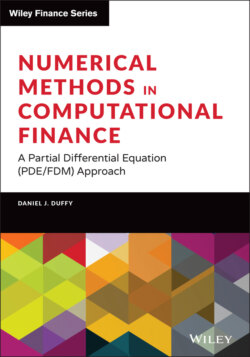Читать книгу Numerical Methods in Computational Finance - Daniel J. Duffy - Страница 68
4.1 SHORT INTRODUCTION AND OBJECTIVES
ОглавлениеThis chapter introduces vector spaces of finite dimension. They can be seen as the n-dimensional generalisation of the two- and three-dimensional vectors that we have become accustomed to. In three dimensions, for example, a vector is a 3-tuple consisting of three components (elements), and it can be visualised as a directed line from the point (0, 0, 0) to the point . In higher dimensions this geometric analogy is lost (unless you are Albert Einstein), and we model vectors as an n-tuple of homogeneous components of a certain type (in most cases real or complex variables). In particular, we discuss the following use cases as we progress:
U1: Addition of vectors.
U2: Premultiplication of a vector by a scalar (an element of a field).
U3: Inner products in vector spaces.
U4: Vector space norms.
U5: The distance between two vectors in some norm.
These abstract properties are applicable to a wide range of data structures that we use in numerical analysis and its (many) applications. They can be specialised to cater for specific data structures such as vectors, matrices and tensors (three-dimensional matrices). For this reason we introduce the reader to vector space theory. Studying it will pay dividends in the rest of this book and beyond in the years to come. For example, vector spaces of finite dimension are generalised to infinite-dimensional Hilbert, Banach and Sobolev spaces, a discussion of which is outside the scope of this book.
